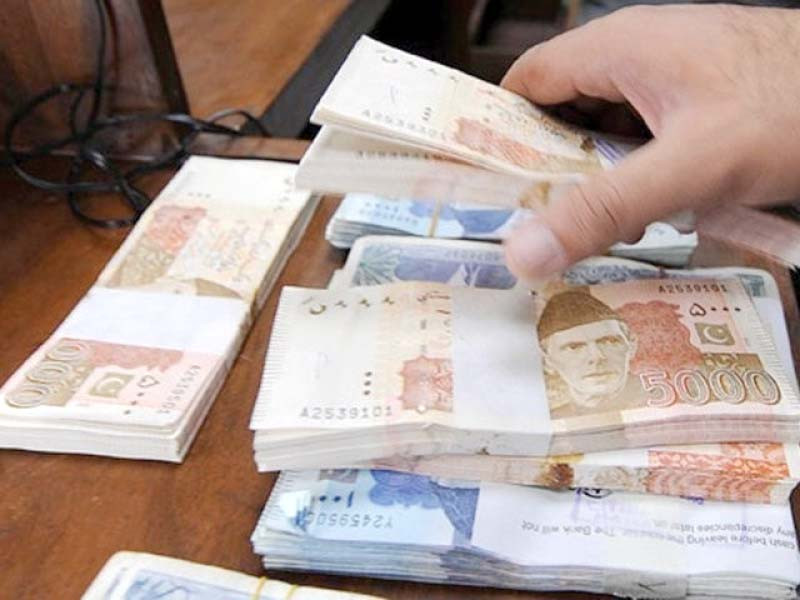
The government has revised upward the last fiscal year’s federal budget deficit to over Rs5.6 trillion – an alarming 51% rise over the preceding year – after nearly Rs200 billion statistical discrepancy surfaced in the accounts.
The discrepancy surprised the finance ministry which, just a week ago, had estimated Rs5.5 trillion budget deficit.
The Rs5.61 trillion gap between the federal income and expenditures was the highest ever in the country’s history.
The ministry released the fiscal operations summary on Friday, showing that the federal budget deficit rose to Rs5.61 trillion – 8.4% of gross domestic product (GDP) – in fiscal year 2021-22 that ended on June 30, against a target of just under Rs4.4 trillion.
The deficit is Rs1.9 trillion or 51% higher than the figures in the fiscal year 2020-21 – the third year of the Pakistan Tehreek-e-Insaf (PTI) government. The PTI remained in power until the first week of April, covering most of the previous fiscal year.
After taking office, PML-N’s Finance Minister Miftah Ismail had said that the budget deficit might increase to Rs5.6 trillion due to huge pending liabilities left behind by the previous government.
The fiscal operations summary showed that there was Rs197.4 billion worth of discrepancy in the accounts of the federal government, which is unusually large as compared with the government’s own loose standards.
The discrepancy stemmed from the financing side of the budget and it was expected to be reconciled once the final accounts were printed by November, said a senior Finance Ministry official responsible for the Budget Wing.
The fiscal discrepancies have remained a matter of concern but no serious efforts have been made in improving the accounting standards, which may cause serious irregularities leading to wastage of public funds.
If the discrepancy remains unsettled, the auditor general of Pakistan and the controller general of accounts may frame objections to be presented before the Public Accounts Committee (PAC).
A major reason behind the record budget deficit is subsidies worth Rs1.53 trillion which were given in the previous fiscal year – higher by Rs1.1 trillion or 260%.
The PTI government gave fuel subsidies that drained the government’s resources and also caused disruption in the International Monetary Fund (IMF) loan programme. More than Rs1 trillion were paid in the subsidies in the last quarter of the fiscal year, as the previous government had not cleared the subsidy accounts, leaving the mess behind for the new government.
The then former finance minister, Shaukat Tarin, had claimed that former prime minister Imran Khan’s fuel and electricity subsidy package would be funded from the dividends income of the state-owned companies. However, the fiscal accounts showed that the dividends income hardly amounted to Rs42.8 billion in the previous fiscal year – even less than the amount reported in the fiscal year 2020-21.
The fiscal operations summary confirmed the widely-held view that the decision to announce fuel and electricity subsidies just days before the ouster of Imran Khan’s government, was irrational and not backed by any resources.
The federal budget deficit equalled to 8.4% of GDP, on the basis of the new size of the economy, which was estimated at Rs67 trillion. However, on the basis of old GDP that had also been used to set budget targets in June last year, the deficit was equalled to 10.4% of GDP. The previous government had updated the methodology and changed the base year, which was in line with international best practices.
The disappointing results have turned the current fiscal year 2022-23 budget largely irrelevant within two months of its approval by the National Assembly. The results have also put a question mark over the government’s ability to deliver on the promises made to the IMF.
Read: Pakistan to negotiate transit deal
During the last fiscal year, the federal government’s total expenditures shot up to Rs9.4 trillion, exceeding the budget target by Rs930 billion, or nearly 9%. This also makes the Rs9.58 trillion expenditure target for the current fiscal year unrealistic. This year’s expenditure allocation is only 3% higher than the previous fiscal year, despite 25% inflation in the country.
The Current expenditures increased to Rs8.5 trillion in the last fiscal year, breaching the budget target by Rs1 trillion. This will also have implications for current year’s current expenditure target of Rs8.7 trillion, largely due to a higher interest payment cost.
In the last fiscal year, the country made Rs3.2 trillion in interest payments – Rs120 billion more than the budget target. Defence spending stood at Rs1.41 trillion, also more than the annual allocation.
The spending on interest payments consumed 85% of the net federal government revenues of Rs3.74 trillion. The Net federal revenues were not even sufficient to fund debt and defence expenditures that stood at Rs4.6 trillion in the last fiscal year. The development spending was Rs558 billion only against a target of Rs900 billion.
Under the IMF programme, Pakistan is committed to gradually converting the primary deficit into a surplus. For this fiscal year, the government is bound to convert the primary deficit – calculated after excluding interest payments – into a surplus of 0.2% of GDP, down from last fiscal year’s 3.6%. The fiscal summary showed that the actual deficit came to Rs2.5 trillion or 3.6% of the GDP against the target of Rs930 billion primary federal budget deficit.
Despite a quite healthy growth in the tax collection by the Federal Board of Revenue (FBR), the gross revenue receipts of the government remained below the target by Rs580 billion. The FBR got Rs6.14 trillion in taxes, surpassing its original target by Rs314 billion.
However, the non-tax revenue slipped below Rs1.2 trillion against the annual target of Rs2.1 trillion. The main reason behind missing the non-tax revenue goal was an unrealistic petroleum levy target of Rs610 billion. As a result, the total gross federal revenue receipts amounted to Rs7.3 trillion, which was Rs580 billion less than the target.
The profits by the State Bank of Pakistan (SBP) shrank by 27% or Rs177 billion in the last fiscal year to Rs474 billion. Similarly, the petroleum levy collection was Rs128 billion –also 70% less than the preceding year.
The federal government’s total net income after transferring provincial shares stood at just Rs3.8 trillion, lower by Rs760 billion from the annual target. The federal government transferred Rs3.6 trillion to provinces as their share in federal taxes, which was slightly better than the budgeted amount due to higher collections by the FBR.
After incorporating the cash surplus of over Rs351 billion achieved by the provincial governments, the overall deficit of the country stood at Rs5.26 trillion, or 7.9% of GDP. The overall primary balance was negative Rs2.1 trillion or 3.1% of the GDP.
The government needs to turn this deficit of Rs2.1 trillion into a surplus of Rs153 billion, requiring fiscal consolidation of Rs2.3 trillion even after incorporating provincial contributions.

1724668524-0/Untitled-design-(5)1724668524-0-405x300.webp)







1732011525-0/Express-Tribune-(8)1732011525-0-270x192.webp)












COMMENTS (6)
Comments are moderated and generally will be posted if they are on-topic and not abusive.
For more information, please see our Comments FAQ